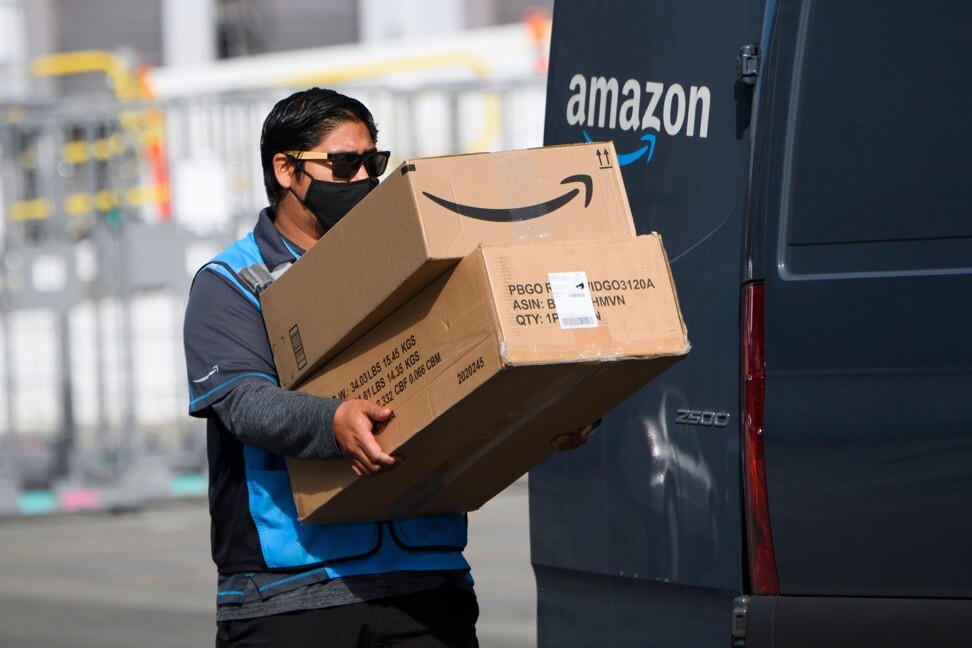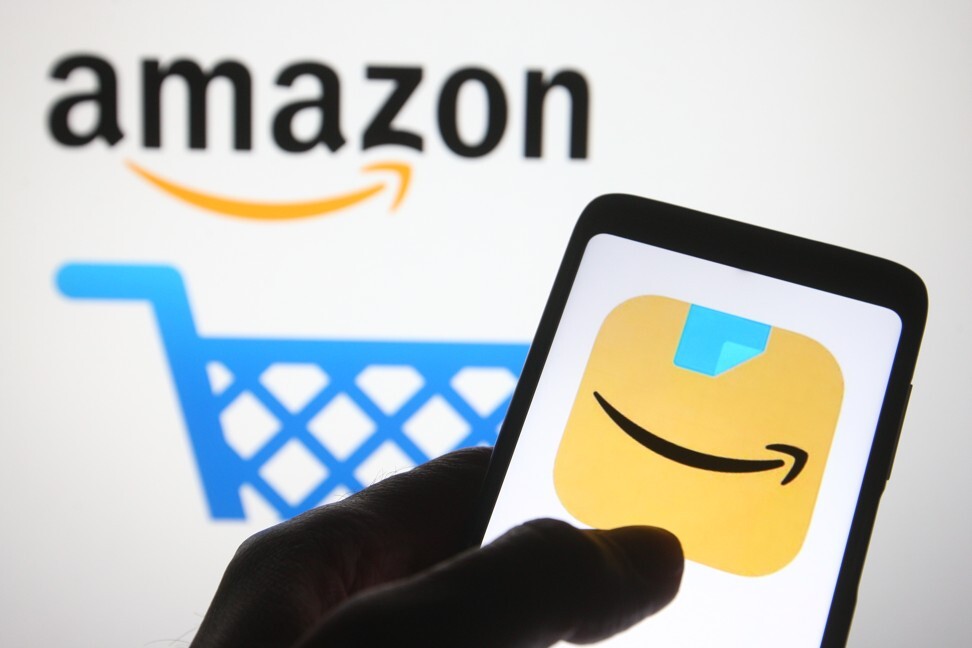
‘Giant can of worms’: Amazon’s battle against product recalls is on
- The US Consumer Product Safety Commission seeks to compel Amazon to take part in formal recalls of defective products sold by merchants on its platform
- It also seeks a precedent-setting ruling that Amazon is a distributor of consumer products and directly responsible for what is sold on its platform
In recent years, dozens of people who say they were harmed by products — including exploding hoverboards, defective batteries and faulty dog collars — have sued Amazon for compensation.
The regulator is also seeking what would be a precedent-setting ruling: that Amazon is a distributor of consumer products under federal law, a designation that would subject the company to future mandatory recalls on behalf of its sellers. Declaring Amazon a distributor would upend a commonplace tech industry defence deployed by online companies from Facebook to Google, which claim they are not responsible for what is said, posted or sold on their platforms.

“If CPSC wins on this, it’s going to be a huge deal for Amazon,” said Boaz Green, a former agency employee who now works for Neal Cohen Law, advising companies that sell their products on Amazon. Product safety advocates and some in the US Congress have been calling for action to tame “what’s perceived as this Wild West, unregulated market, with all these small sellers they can’t get at.
“But they can get at Amazon, or they can try.”
A determination that Amazon is responsible for its third-party sellers would hold the company legally liable for instances where it failed to warn consumers of defective products or banned products that had resurfaced for sale again, potentially forcing the company to spend more time and money overseeing its web store. It would also likely increase Amazon’s insurance costs.
The battle involves an often misunderstood feature of Amazon’s retail empire: most items sold on its platform are not owned by the Seattle-based company. Technically, these are sold by third-party sellers, a category that encompasses established brands, family-run crafts makers and hundreds of thousands of Chinese manufacturers and distributors.
Amazon charges a commission and other fees to list on the site. Increasingly, it also takes care of shipping and handling, under a programme called Fulfilment by Amazon that charges sellers to store items in the company’s warehouses and send them on to customers after they click “Buy Now”.
That model helped fuel Amazon’s rise, stocking its shelves with an almost endless supply of goods. But the online marketplace, which lets sellers sign up and manage their listings with largely self-service tools, has become increasingly difficult to control and patrol. When consumers are harmed by unsafe or counterfeit products, they have little choice but to try suing a company that has won more often than it has lost.
Since product liability rules are set at the state level, the case of a California woman who sued and won after being burned in a fire allegedly sparked by a hoverboard she bought on Amazon had little bearing on the company’s success earlier this year when it fended off a lawsuit from the parents of a toddler injured in Texas after swallowing a remote-control battery.
Product liability cases have usually been decided on narrow issues such as whether Amazon took ownership of the items, or if it played a role in creating a market for a certain product. The company typically asserts that it is a neutral marketplace, connecting buyers and sellers, or that it is protected from liability because other companies wrote item descriptions and arranged for product delivery. It has also sought to use as a shield Section 230 of the Communications Decency Act, a legal provision that grants web platforms immunity for content created by others.
Now federal authorities are sidestepping that defence and targeting Amazon’s vast logistics operation.
In the lawsuit filed last week, the CPSC said that products stored and shipped by Amazon meet the “distributor” definition as laid out in the Consumer Product Safety Act, giving the agency the power to compel Amazon to cooperate with recalls of third-party products and levy penalties when it fails to do so. The CPSC is trying to get Amazon to participate in formal recalls of hundreds of thousands of hair dryers, carbon monoxide alarms and children’s pyjamas, sold by third parties but stored and shipped by the company.
At the Prosper Show, a conference for Amazon merchants held last week in Las Vegas, dozens of attendees sat in on a session about product safety rules, a topic that took on more importance in light of the CPSC lawsuit. Rachel Greer, a former Amazon employee who now advises merchants, said that the company began contacting clients who sell children’s sleepwear about eight months ago, hinting that regulators were sniffing around.
Amazon has been gradually getting more vigilant about product safety over the past several years, Greer said. A new product safety team started work by 2016, and Amazon began requiring better product labelling on potentially hazardous products.
Last year, the company started requesting compliance documents from those vendors selling certain products to show they were meeting standards.
Greer indicated that Amazon is fighting responsibility for recalls to avoid “this giant can of worms”.
“There are so many items being imported that aren’t meeting requirements in the US,” she said. “So if they do this recall, CPSC could say, ‘Great, now do the rest’.”

In emailed statements, Amazon said that, by contacting customers about defective products and issuing refunds, it had already done what CPSC aims to achieve with a formal recall.
“Amazon has always believed that we have an obligation to our customers to provide the safest shopping experience,” said company spokeswoman Mary Kate McCarthy. “This is why Amazon has messaged customers and covered the cost of refunds when selling partners failed to engage with regulators about recalls.”
The company has also touted its work to make sure products on its marketplace are safe, including software that scans products for hazards and requirements that sellers of some categories of goods upload product testing or other certificates.
Before the lawsuit, Amazon had proposed working with the CPSC to set up a voluntary system in which Amazon and other online marketplaces would coordinate recalls on behalf of their sellers. Talks broke down, a spokesman for the agency said, when it was clear Amazon would refuse to go through formal, legally mandated recall processes.
In a statement, acting CPSC Chairman Robert Adler lamented that before it can carry out a recall of a product sold on a marketplace, the agency typically has to go through “a lengthy negotiation” with companies like Amazon to establish whether they are even subject to regulation. “Clearly the current approach is not sustainable,” he wrote.
“This is a shot over the bow for online platforms in general,” Creighton Magid, a product liability and regulatory lawyer with the firm Dorsey & Whitney, said of the lawsuit. It is also a gamble for the roughly 500-person CPSC, which coordinates hundreds of product recalls but rarely seeks to take uncooperative manufacturers or retailers to court.
Magid, who represents businesses that must comply with product regulations, said the CPSC is an under-resourced agency that must be very selective in what actions it pursues. Here, it is “taking on an 800-pound gorilla”, he said.
The case could take years to resolve. It will first be heard by an administrative law judge; then parties can appeal to the full board of CPSC commissioners. From there, the loser could seek another hearing in federal district court.
In the meantime, state legislatures could act. California has considered a bill that would apply to online marketplaces the same liability standards as physical retailers, but it stalled as appeals courts found Amazon responsible for marketplace products under existing law.
Amazon offered support for that bill if it would encompass all online marketplaces, spreading the costs of compliance that Amazon is well positioned to bear. Amazon’s smaller rivals, and a trade group representing eBay, Etsy and Shopify, opposed the measure.
“Somebody needs to pay for the harm,” said Daniel Hinkle, a senior state affairs counsel with the American Association for Justice, a trade group for trial lawyers.
“Because if they don’t pay for the harm, it’s the consumer that does,” Hinkle said. “They’re the ones who are out a home, a car or a child, or are relegated to a wheelchair for the rest of their lives.”

